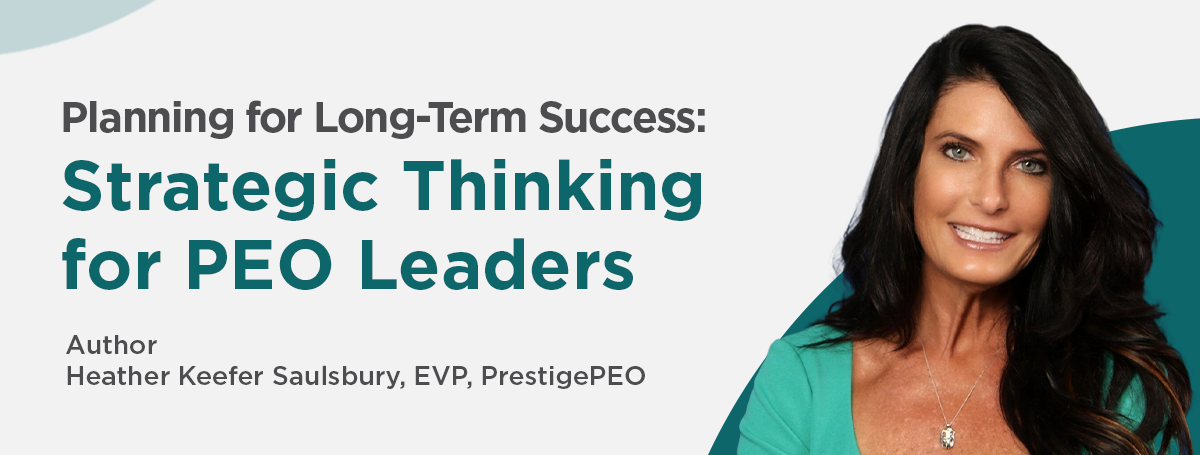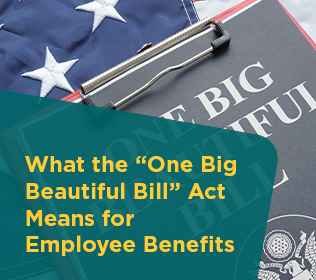
All established industries go through lifecycle changes over the years based on market and economic trends. Leadership must embrace change with a forward-thinking mindset, keeping up with shifting demands and expectations.
The PEO industry is now several decades old. PEO leaders have shifted and evolved their respective PEO through the consistent change. PEOs have contended with changing terminology, rebranding and remarketing based on shifting preferences. Now, we might cringe at the phrase “employee leasing,” but we still need to understand and embrace the past to fully understand how the industry has changed.
This industry continues to grow with more than 500 PEOs in the U.S. employing 4.5 million worksite employees and representing 17% of employers that have 10 to 99 employees.
As the PEO industry develops into its adulthood, the climate continues to shift.
No matter what changes are ahead, PEO leaders must think strategically for continued success in the years to come.
Embrace Shifts in Client and Employee Sentiment
PEO clients are the drivers of change in the industry. Employees and labor market trends significantly impact the benefits and support actions employers take. Your strategic roadmap for the future could account for current PEO industry trends like:
- More small businesses working with PEOs
- An increasingly competitive benefits landscape
- A greater focus on employee retention and satisfaction
- Reducing the cost of Human Resources with better technology
- Integrating more holistic wellness programs for employees
Additionally, newer generations are stepping into leadership roles, so it’s key to appeal to the new way of doing business. This primarily requires embracing new technology requirements (we’ll discuss this more below).
Nailing down exactly what employees and clients are looking for helps PEO leaders respond accordingly. For instance, leaders should be prioritizing new tech partnerships and embracing the efficiencies that robust insights provide to organizations due to an increased emphasis on technology and remote work.
A Focus on Education and Improved Service Delivery
With several shifts in the industry and an increasing dependence on technology, leaders must prioritize training and education. PEOs can only truly meet the needs of the moment with agile, informed team members.
Policies must be in place to ensure timely updates are made based on new systems, human resources trends and changing labor legislation. Emphasize the importance of professional development and continuous growth throughout your teams. PEO leaders and team members alike must be closely connected to the market at large through networking, events and continued learning.
PEOs wouldn’t exist if businesses knew exactly what to do when it comes to human resources. That’s why our clients pay us. They put their trust in us to gain access to the best of the best. Live up to that need with a greater emphasis on team learning and growth, which leads to the exceptional service delivery that today’s businesses expect.
Paving the Way for New Leadership
Another key concern for PEO leaders is recognizing when it’s time to lead and embrace change. The foremothers and forefathers of the industry are now retiring, and that means many new and different people, with varying industry backgrounds, are taking on leadership roles. Embracing these shifts means taking steps like:
- Creating new opportunities for mentorship and relationship-building
- Keeping an open mind to improvements that change brings to industries and companies
- Not holding on to outdated systems and processes
- Asking for feedback from clients and employees at all experience levels
- Establishing clear policies and roadmaps for leadership transitions
- Reinforcing company culture, values and purpose and how changes still embrace those key components of the organization’s mission
- Encouraging open communication and transparency
- Encourage our educational system to include PEO content in business coursework for students in state colleges and universities.
Embracing an attitude of acceptance and recognizing when a new idea is better is conducive to growth and success. It also helps you to forecast the future.
Keeping the Pulse on the Future
Not all changes can be foreseen, but that doesn’t mean PEO leaders can’t prepare. Understanding technology and data trends better can help you recognize that these technologies usually aren’t going away. It is better to stay ahead of data trends, embracing what they can do for businesses and what they may mean for the industry as a whole.
For example, as time-consuming tasks are automated and thus become more efficient, consider what that means for the greater workforce. What jobs are impacted, and what jobs are created? Ask how AI or new data tools can assist with Human Resources solutions like recruitment in onboarding to improve candidate screening and culture matching. Rely on data analytics tools to better understand retention and turnover at client organizations and integrate more personalized solutions.
Another current and future concern is what the typical work environment will look like. There is a huge need now more than ever to prioritize company culture. Leaders need to identify, create and foster a positive work culture that aligns with the company’s purpose, no matter what the modern workplace looks like.
Finally, remember that employers don’t always know what changes to compliance laws are being proposed and even implemented. Stay ahead of any potential legislation shifts so you can be there for clients when it is time to update policies.
Be Prepared for Change
Clients and human resources complexities may always be evolving, but one thing is certain: PEO leaders must be prepared for continuous change. This means being open and flexible, knowing when to recalibrate and staying ahead of what’s in store for the future. Courtship, grooming, and mentorship of the industry’s current and rising leaders will help to strengthen the foundation of our continues success and growth trajectory.




